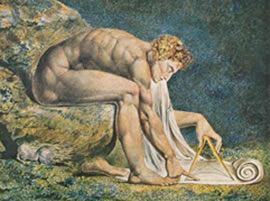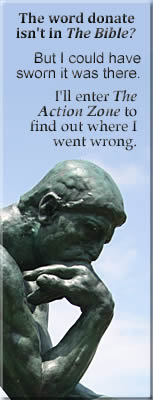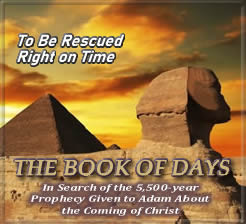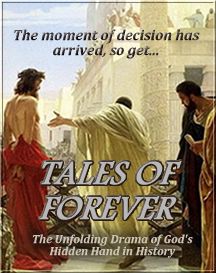Architect of the Universe
Searching for Sciences of Life
For anyone interested in understanding the lives of those individuals who have shaped our world for the better, the most frustrating aspect in this pursuit is the extent to which the shadows of history edit their biographical truth. Time and time again, the facts regarding the lives of the great pioneers of the Arts, Sciences, and Humanities are subjected to a process of homogenization as they are endlessly reshaped into a more politically correct version that is rarely as interesting as the original life that was actually lived. The end result: What constitutes the totality of these great lives is severely watered down and the resulting biographies, which are then passed on to subsequent generations, are devoid of their most vital aspects. Never has this process been more at work in the retelling of the life of one of the most influential figures of the seventeenth century—or any century, for that matter—Isaac Newton.
Born prematurely on Christmas Day in 1642, in a hamlet of Lincolnshire, England, Newton, though reportedly a tiny child in his early years, nevertheless grew to become a veritable giant in the annals of history. When one considers that no one, no matter how brilliant before or since, will ever stand in such a uniquely pivotal point in the timeline of human thought, he is regarded by many to be the greatest scientist to have ever lived.1 Prior to the advent of Newton, similar explorations into the nature of the physical world were greeted with suspicion and superstition. When, in the late thirteenth century, Roger Bacon offered up his conclusions about the nature of light and the rainbow—just as Newton would do three centuries later—far from being embraced for his pioneering work, he was accused of black magic and imprisoned for his “suspiciously novel” ideas.2 As historian Daniel J. Boorstin puts it in his monumental chronicle The Discoverers, “While earlier experimentalists were assumed to be in league with the devil, Newton was placed at the right hand of God. Unlike Galileo, his greatest predecessor, Newton was swimming with the scientific current of his time. He probably exercised greater influence over scientific thought than any secular figure since Aristotle. There would not be another such hero until Einstein.”3
Well known is that Newton’s endeavors encompass nearly every aspect of the physical world; among his greatest accomplishments is that he virtually invented the science of mechanics as well as most of the science of optics.4 His work has been said to “distinctly advance every branch of mathematics then studied.”5 In the process of achieving his marvelous breakthroughs, he managed to design and build, by late 1668, the world’s first known functional reflecting telescope. Less than a decade later, he published his most famous work, Mathematical Principles of Natural Philosophy, and while acceptance of Newton’s theories was not immediate, by the end of the seventeenth century, "no one could deny that a new science had (from the pages of this one book) emerged that, at least in certain respects, so far exceeded anything that had ever gone before that it alone stood as the ultimate example of scientific genius.”6
Story Continues Below
To watch author and historian W. Kent Smith discuss the contents of his book On Earth as It is On Heaven, at the Sacred Word Revealed Conference ’23, hosted by Zen Garcia, CLICK BELOW.
Story Continues From Above
One of the great ironies of history is that this book, which did so much for the advancement of human knowledge, nearly went unpublished; it was only published after his friend Edmund Halley—best known for computing the orbit of the comet that bears his name—accidently learned of the existence of part one, which Newton had written a decade earlier only to hide it away in a desk drawer. Only after much persuasion did Newton finally finish parts two and three of the book, eventually publishing it in 1687, thereby laying the foundations for most of classical mechanics.7
Just think, were it not for this fortuitous discovery on the part of Halley, this landmark publication might never have seen the light of day, and as a result, no child in his first science class would ever be taught about the Three Laws of Motion; neither would there be a word about the nature of light, nor universal gravitation. Missing, too, would be any hands-on learning in the use of prisms or telescopes. Worse still, there would be no look of wonder in wide-eyed children in response to stories of mankind’s conquest of space, no pictures of the first human footsteps on the Moon, all of which were possible only because of Newton’s far reaching contributions to scientific thinking.
Such are the near hits and misses that comprise the serendipitous nature of history; and such is the case particularly in light of the fact that even today schoolchildren are not being taught one of the most unique aspects of the life of this giant. Even more important is what this exclusion tells us about the process of historical and biographical investigation itself, because what is not so well known about the life of Isaac Newton is that for all he wrote in his effort to nurture the development of scientific knowledge, he wrote even more on the subjects of spirituality, God, and The Bible, a book he believed to be literally true in every respect.8
As if no one were there with the dogged persistence of an Edmund Halley, no one is there today to teach our children that throughout Newton’s life, he sought with resolute dedication to test biblical truth as he saw it against the physical truths of experimental and theoretical sciences. Not only did Newton never observe a contradiction between science and The Bible, he was absolutely convinced that his own scientific pursuits were providing mankind with a universal methodology to help reinforce one’s belief in biblical truth.9
So why, as we were being taught about the life of such a man in our most formative years as schoolchildren, were we never informed about these things? Why, instead, were we consistently fed a myopic diet that insisted that a belief in a scientific frame of reference and a belief in the Bible were irrevocably at odds with one another. If the teaching of scientific truth is tanamount to conveying the whole truth and nothing but the truth, wouldn’t it be better to teach what Newton really believed? If so, then one would need look no further than the words of J.H. Tiner, when he said of the man that “although the laws of motion and universal gravitation became Isaac Newton’s best-known discoveries, he warned against using them to view the Universe as a mere machine… He said: ‘Gravity explains the motions of the planets, but it cannot explain Who set the planets in motion. God governs all things and knows all that is or can be done.’”10
With the advent of the Age of Enlightenment, the notion of a theocentric, or God-ordered, Universe was becoming increasingly outmoded, and was more and more being ridiculed as nothing more than another form of “magical thinking.” But Newton, writing a number of religious tracts in the 1690s, dealing with the literal interpretation of The Bible, refuted such an oversimplification of the natural world. To Newton, the Universe was clearly governed by what he described as an “interventionist God Who designed the world via rational and universally apparent laws, which were evident to all peoples the world over.” In the mind of Newton, “God was a master Creator, Whose very existence could not be denied in the face of the grandeur of all creation.” What a tragedy, then, to think that while Newton is duly noted for his Herculean influence on the train of scientific development, he has been robbed of his equally influenctial role in the development of post-Enlightenment religious thought.
So the question remains: Why are these facts are withheld from any thoughtful student of the great pioneers who have single-handedly revolutionized our most cherished views of reality? If one were to pose this question to today’s teachers, what might their answer be? Might they argue that the scientifically-minded Newton somehow represented a distinctly separate entity from that of the spiritually-minded Newton? Might they attempt to explain away this side of the great architect of modern science by insisting on dissecting his belief in the God of The Bible from that of his “genuinely important modes of thought”? If so, then they—and anyone else interested in such dichotomies—might also be interested in the following quote which I would like to offer for the sake of those historians who might still be too reluctant to search for it themselves. When Newton wrote a correspondence to one Dr. Richard Bentley, concerning his wishes in regard to writing his monumental Principles, he emphatically stated that “when I wrote my Treatise about our System, I had an eye upon such Principles as might work with thoughtful men, for the sake of believing in a Deity, and nothing could make me happier than to find it useful for such a purpose.”11
Tell me, then, do this sound like someone who’d be happy to know that the message he hoped to convey to future generations had been replaced by a mere shadow of his original model? If so, then imagine the shock and horror of this great man if were still around to shake hands with the personification of his genius, only to find himself shaking hands with the Tin Man himself—the Tin Man of a purely mechanistic Universe—a wondrous walking, talking robot that pitifully lacks a heart. Wouldn’t that be a tragic story to have to tell our schoolchildren? Yet it is, sadly, one that is, in fact, still being told each and every day to our most impressionable youths, until finally somebody rises up and asks, “Are you ready to hear a new story, my beloved children, even more wondrous?”






